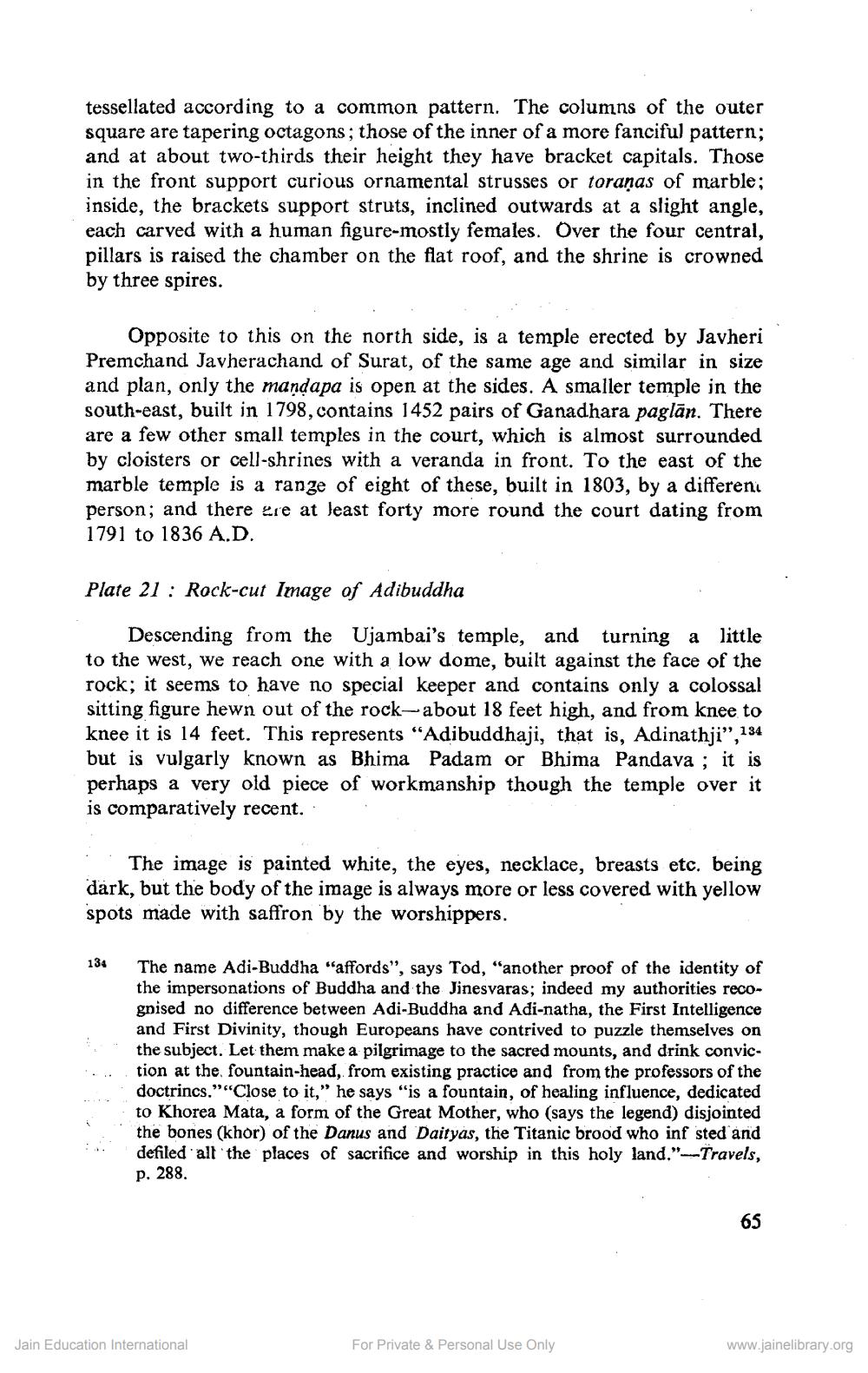________________
tessellated according to a common pattern. The columns of the outer square are tapering octagons; those of the inner of a more fanciful pattern; and at about two-thirds their height they have bracket capitals. Those in the front support curious ornamental strusses or toraņas of marble; inside, the brackets support struts, inclined outwards at a slight angle, each carved with a human figure-mostly females. Over the four central, pillars is raised the chamber on the flat roof, and the shrine is crowned by three spires.
Opposite to this on the north side, is a temple erected by Javheri Premchand Javherachand of Surat, of the same age and similar in size and plan, only the mandapa is open at the sides. A smaller temple in the south-east, built in 1798, contains 1452 pairs of Ganadhara paglān. There are a few other small temples in the court, which is almost surrounded by cloisters or cell-shrines with a veranda in front. To the east of the marble temple is a range of eight of these, built in 1803, by a different person; and there are at least forty more round the court dating from 1791 to 1836 A.D.
Plate 21 : Rock-cut Image of Adibuddha
Descending from the Ujambai's temple, and turning a little to the west, we reach one with a low dome, built against the face of the rock; it seems to have no special keeper and contains only a colossal sitting figure hewn out of the rock-about 18 feet high, and from knee to knee it is 14 feet. This represents "Adibuddhaji, that is, Adinathji”, 134 but is vulgarly known as Bhima Padam or Bhima Pandava ; it is perhaps a very old piece of workmanship though the temple over it is comparatively recent.
The image is painted white, the eyes, necklace, breasts etc. being dark, but the body of the image is always more or less covered with yellow spots made with saffron by the worshippers.
134
..
The name Adi-Buddha "affords”, says Tod, "another proof of the identity of the impersonations of Buddha and the Jinesvaras; indeed my authorities recognised no difference between Adi-Buddha and Adi-natha, the First Intelligence and First Divinity, though Europeans have contrived to puzzle themselves on the subject. Let them make a pilgrimage to the sacred mounts, and drink conviction at the fountain-head, from existing practice and from the professors of the doctrincs.""Close to it," he says "is a fountain, of healing influence, dedicated to Khorea Mata, a form of the Great Mother, who (says the legend) disjointed the bones (khor) of the Danus and Daityas, the Titanic brood who inf sted and defiled all the places of sacrifice and worship in this holy land."-Travels, P. 288.
65
Jain Education International
For Private & Personal Use Only
www.jainelibrary.org




